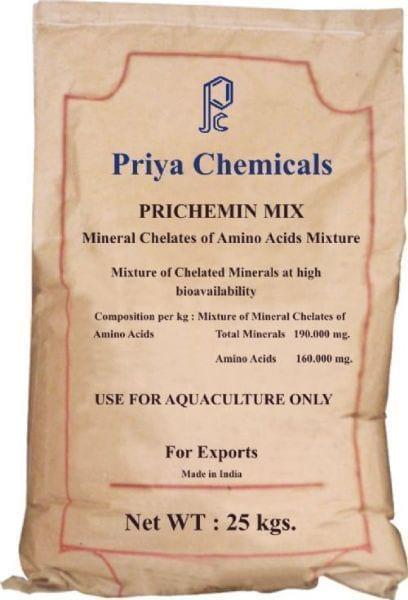Black Soldier Fly Prepupae for Aquaculture Diets
Mass Production of Black Soldier Fly Prepupae for Aquaculture Diets

Very fascinating article about Black Soldier Fly Prepupae for Aquaculture Diets! I observed soldier fly larvae many years ago.........while operating an organic quail farm ! I am hoping to get more involved in this.......to offset the high cost of fish feed ! Jeff Laliberte Chasco Fish Co. Tampa , Fla
Great article about Black Soldier Fly Prepupae for Aquaculture Diets. Very encouraging! i would like to establish a farm of this insect to feed my fish! patrice tunde adewoyin ibadan nigeria

Yes, the black soldier fly is in west Africa. It is studied in the following article:
Bioconversion of palm kernal meal for aquaculture: Experiences from the forest region (Republic of Guinea). S. Hem, S Toure, C. Sagbla, M Legendre. African Journal of Biotechnology. 7(8): 1192-1198. 2008.
It is said to be distributed from central to southern Africa.
The Black Soldier Fly Prepupae does occur in South Africa. We have recently started a colony. Since we have started the colony we have found them all over and if you look for them you will most probably find them. They are hardy and travel well. Good luck - I must say they are most enjoyable to work with.


PRICHEMIN MIX

Thank you for the information on Black Soldier Fly Prepupae for Aquaculture Diets. The black soldier fly is an insect of the forest but can be attracted to moist substrates including composts, manures, and agricultural crop byproducts.
Since some facility development and extra labor is necessary to take soldier fly culture to an industrial level, it has not been widely accepted. However, small scale production is becoming more common.
Also, the fatty acid composition of soldier fly lacks omeg-3 fatty acids, unless the substrate is supplemented. So, complete replacement of fish meal in diets for fish that require highly unsaturated fatty acids should be carefully considered.
This is an interesting development about Black Soldier Fly Prepupae for Aquaculture Diets, and I think it is feasible to be tried in Uganda. I am not so familiar with the biology and nutrient composition, but I hope working with entomologists would be the best option. Thank you for sharing this interesting study.
Godfrey, Makerere-Uganda.
I have lots of photos and movies challenge maggot farming techniques in small-scale or mass in Jambi Freshwater Aquaculture Development Centre and Farmers Sarolangun district, when I worked with Saurin Hem researcher from IRD Perancis of Jambi Sumatra in Indonesia and I want to upload on the internet for your friends but do not know how.
Thank Mr.Gary, you are great.


PRICHEMIN MIX
Ediwarman thanks for your offer of photos and videos. They would be very interesting. and thanks for highlighting economics of operation. None of the small scale research I've seen really factors in costs of supplying feed for black soldier fly larvae.
Moderator, Gary, can we get Mr Ediwarman's photos and videos added here?
Dear Ediwarman,
Please upload all the pictures you want to your profile and then we will add a link on this forum so that members will have access to your album easily.
Thanks!!!

Dear Mr Gary and Analia,
Maggot mass cultivation photo has been uploaded on my profile, please use the interests of science, but must ask my permission first and for the movie I'll try again to upload
Thank you so much

Black soldier fly prepupae have good nutrient content and very good palatabilty for most fish. Those fish that require high levels of omega 3 fatty acids will need a supplement of fish or crustacean oil. It is also possible to add flax oil or flax meal to get some of the shorter chain omega 3 fatty acids.
To scale up, use a cheap substrate for the black solder fly. One that can be obtained in enough quantity and handled in an expedient manner. Food waste, brewers grains, and poultry bedding may be good substrates for black solder fly. Harvesting must be made to minimize labor. Pre-pupae will craw up an incline and self-harvest if the substrate bins are designed properly.
Moving substrate into and out of bins is also a logistical problem. Since a residual spent substrate should be removed after each batch of soldier fly pre-pupae are harvested, the bin should allow for at least one side to be opened so that residue can be scraped, shovelled, or dragged out. Envision handling methods similar to those used for compost.
The prepupae, once harvested, may be fed live, dried, or dried and ground. Dried and ground pre-pupae can be mixed into a grain based fish diet for pelleting, etc. The oily and gummy nature of the dried pre-pupae requires special attention. Blending the dried pre-pupae with a low-fat grain before grinding may allow grinding in conventional hammer mills. The resulting product can usually be stored until needed to formulate fish feeds.
Utlization of black soldier fly pre-pupae in commercial scale feed milling will require attention to product flow engineering.
I would like to see more on-the-farm processing of fish feed. One method for that was extended in Thailand in the 1990's. A commercial scale meat grinder was utilized to form an extrusion of wet feed formulation, then dried in the sun. The extrusion was broken into pellet-like portions for feeding to fish. The drying process and labor requirement to handle and recover the feed may be mechanized or protected in a greenhouse/conveyor design.
Work with a team including economic and engineering expertise should end with a commercial scale production system.


PRICHEMIN MIX
Mr. Gary, Mis. Analia and friends. Now in Depok West Java, Indonesia MR. Domenico caruso from IRD France still continued to work maggot farming. Domenico caruso tried several of media for the growth of Maggots. for mass cultivation in the province of Jambi performed well in the farmers as well as my station, using palm oil cake (you can see in my profile).
Thank you





United States









